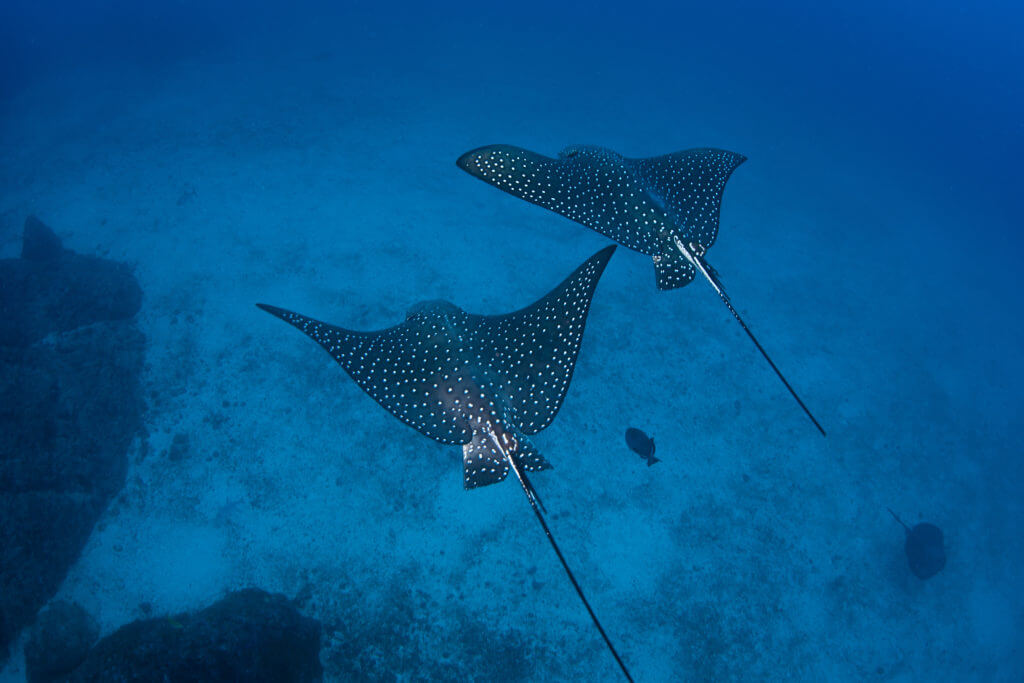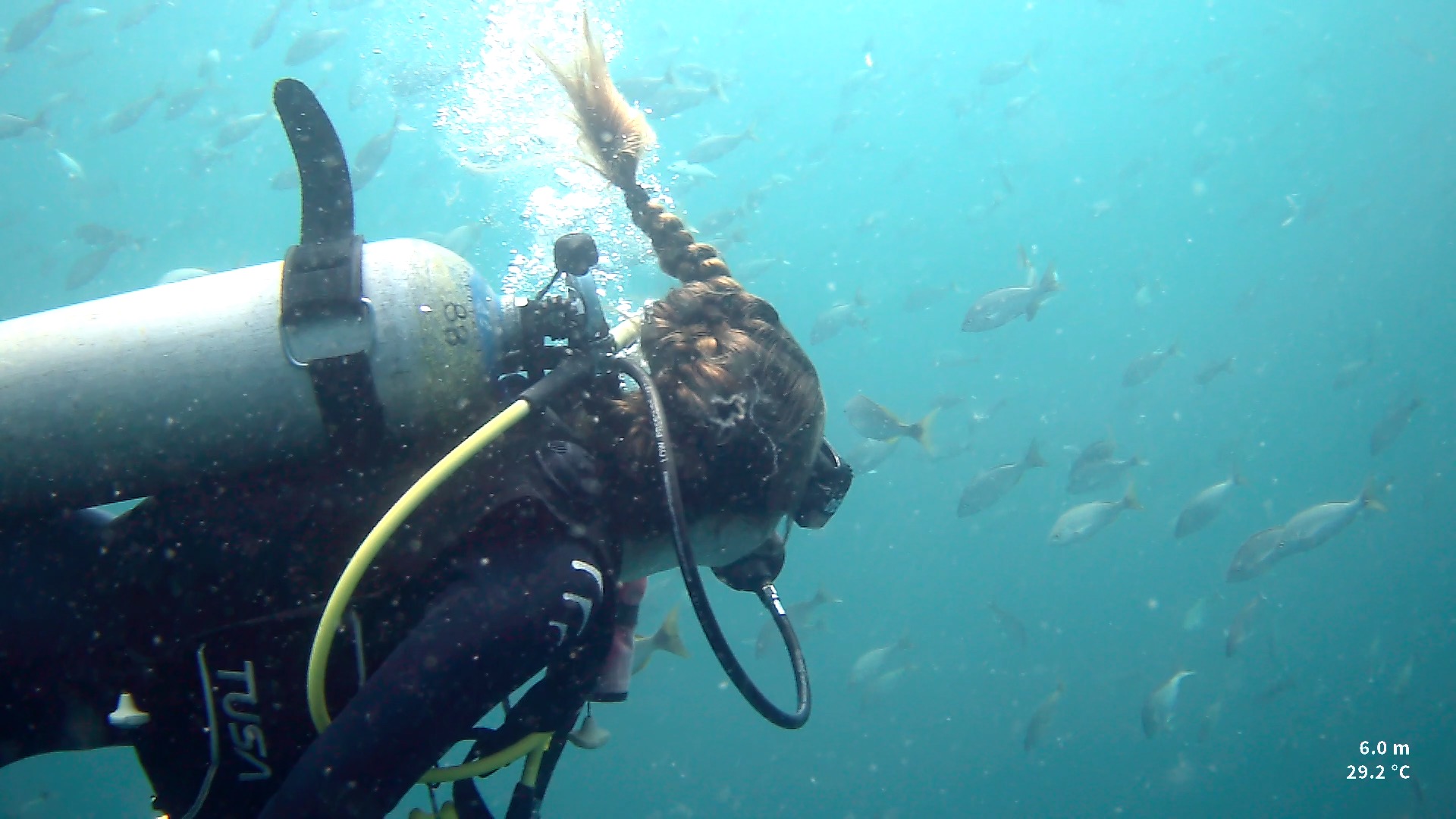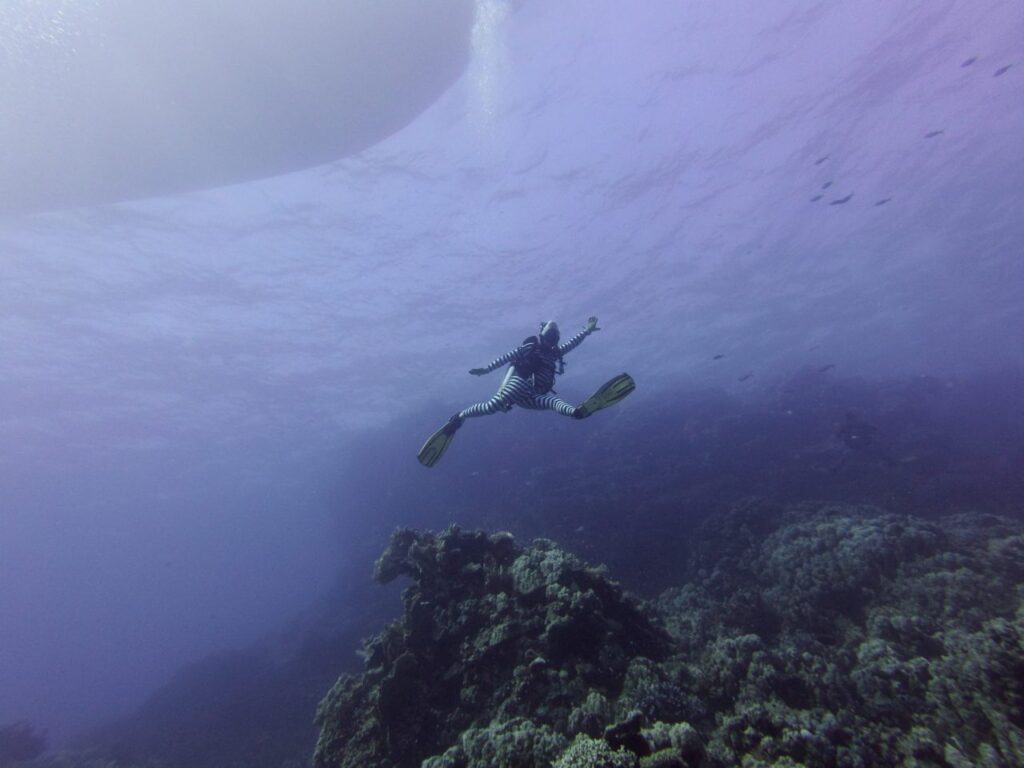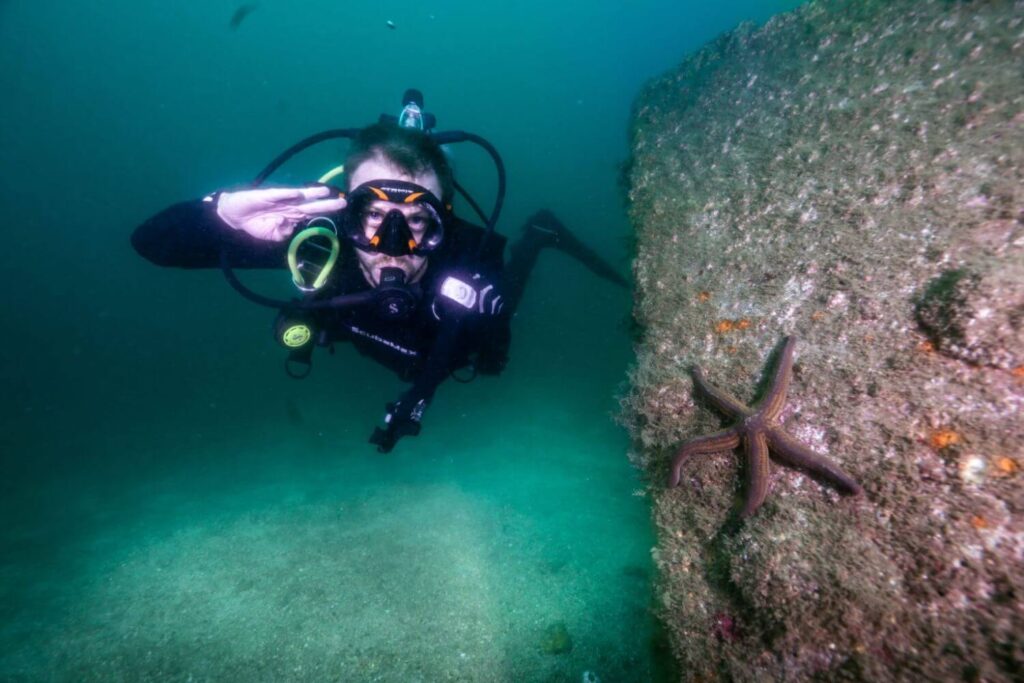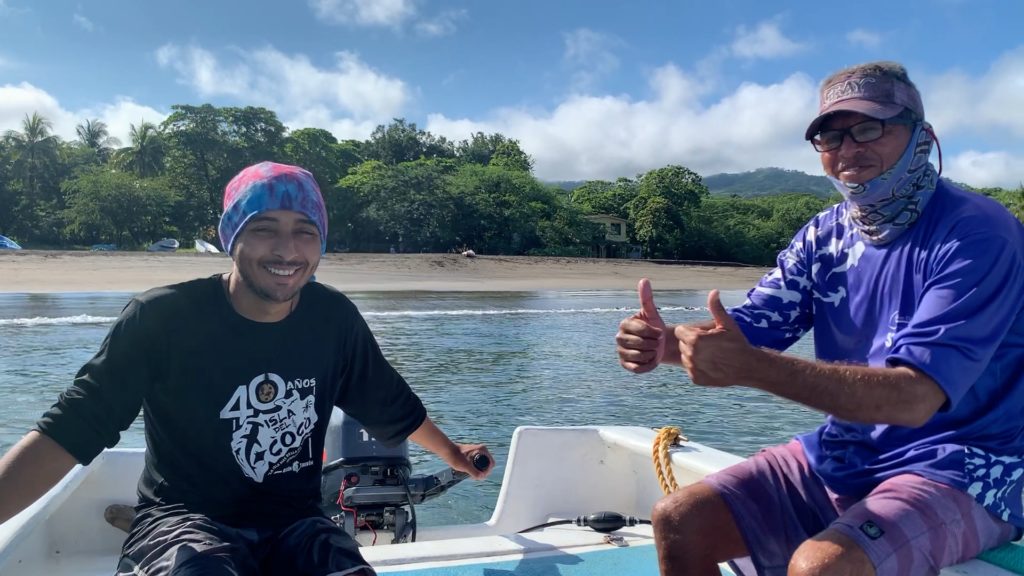
Located on Costa Rica‘s north pacific coast in Guanacaste Province, Playa del Coco – also known as El Coco, is the easiest to reach of all of the countries best diving destinations.
It also serves as a jumping off point to the Bat Islands where you can encounter bull sharks and the Catalina Islands where you can discover many manta rays.
In this guide, I’ll be describing Playa del Coco diving, which refers to diving within El Coco bay (as well as the bay directly next to it, Hermosa bay), which is an experience within itself.
Read on to find out what you can see when scuba diving Playa del Coco as well as the best time to go, how to get there and more.
Scuba Diving Playa del Coco:
Coral reef is practically non-existent but this is made up for by the sheer number of big animals and abundant fish life.
Playa del Coco is teaming with whitetip reef sharks, rays, turtles and vast schools of fish including longfin batfish, sergeant major fish, butterfly fish and many puffers.
With practically non-existent currents and the option to be dived all year round as well as the fact that most dive sites do not exceed 66 ft / 20m, this is the most beginner friendly and straight forward of all of Costa Rica’s dive destinations.
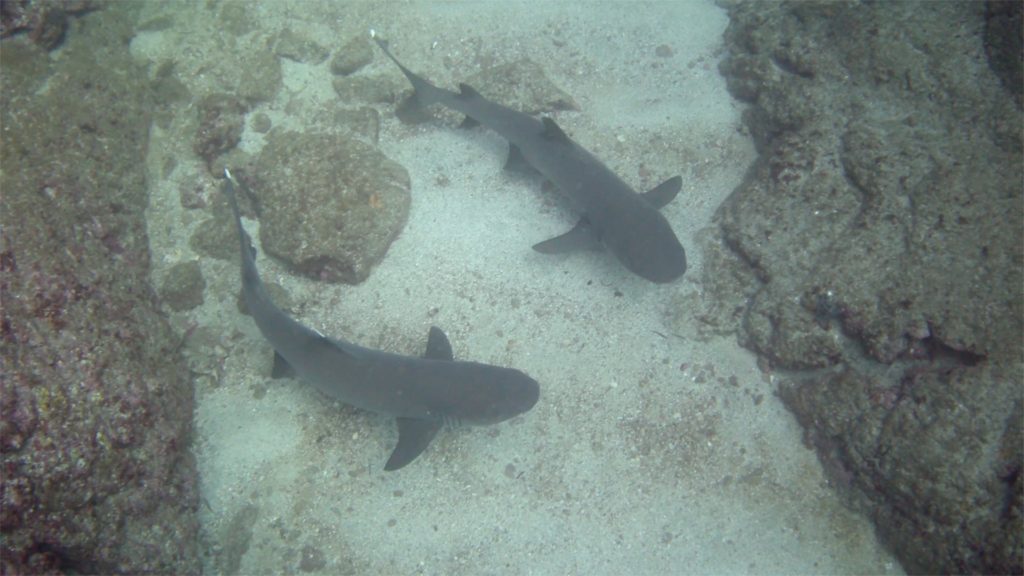
In terms of large marine life, whitetip reef sharks are the most common denominator encountered when scuba diving Playa del Coco – it’s not unusual to see four or more on a single dive.
Rarely exceeding five foot in length these cute little sharks are extremely docile and non-aggressive to humans but still look and move in a way that is distinctly sharky.
During the day, they like to rest on the sea bottom; alone or in small groups, seldom moving except for away when you approach them – but at night they hunt fish in packs.
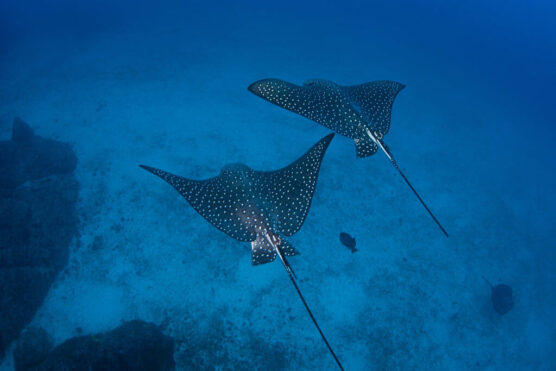
Playa del Coco is also a great place to spot rays – especially huge southern stingrays which can measure up to 4ft and typically rest on the sand by day.
There are also many smaller but more active spotted eagle rays; easily identifiable by the many yellow spots covering their dark blue bodies.
Spotted eagle rays are almost always on the move, cruising along singularly or in small to large groups.
From the boat, you’ll often spot them jumping several feet out of the water, making an almighty splash as they land back in it.
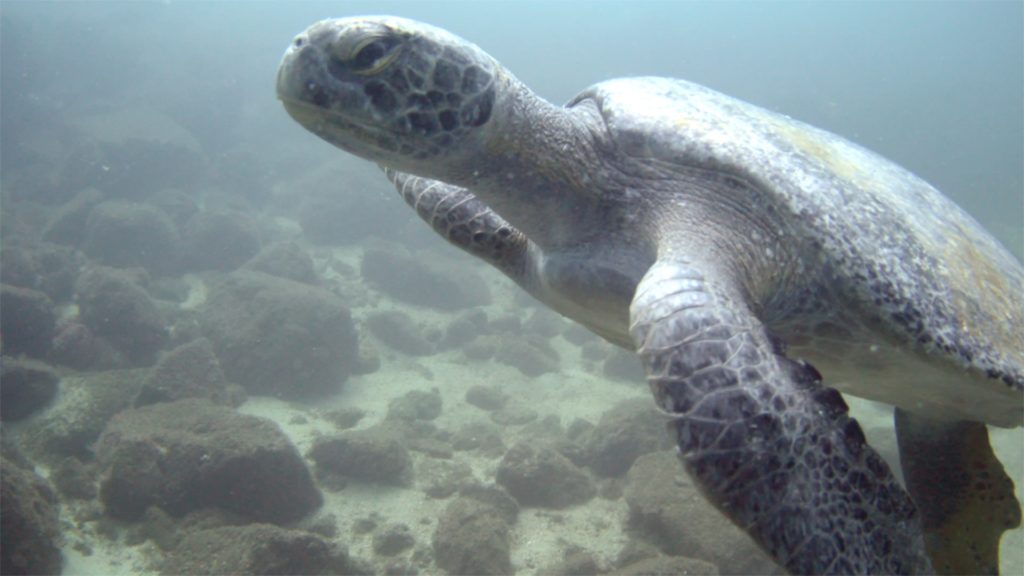
Slightly less common than rays and whitetip sharks, but still highly likely to be encountered are turtles, especially green sea turtles and hawksbill turtles.
During my time diving around Playa del Coco I was delighted to see how unusually curious and friendly these turtles are; often swimming right up to divers for a high five.
It’s common to see males courting females as well as individuals swimming to the surface for a quick gasp of air before they dive back down.
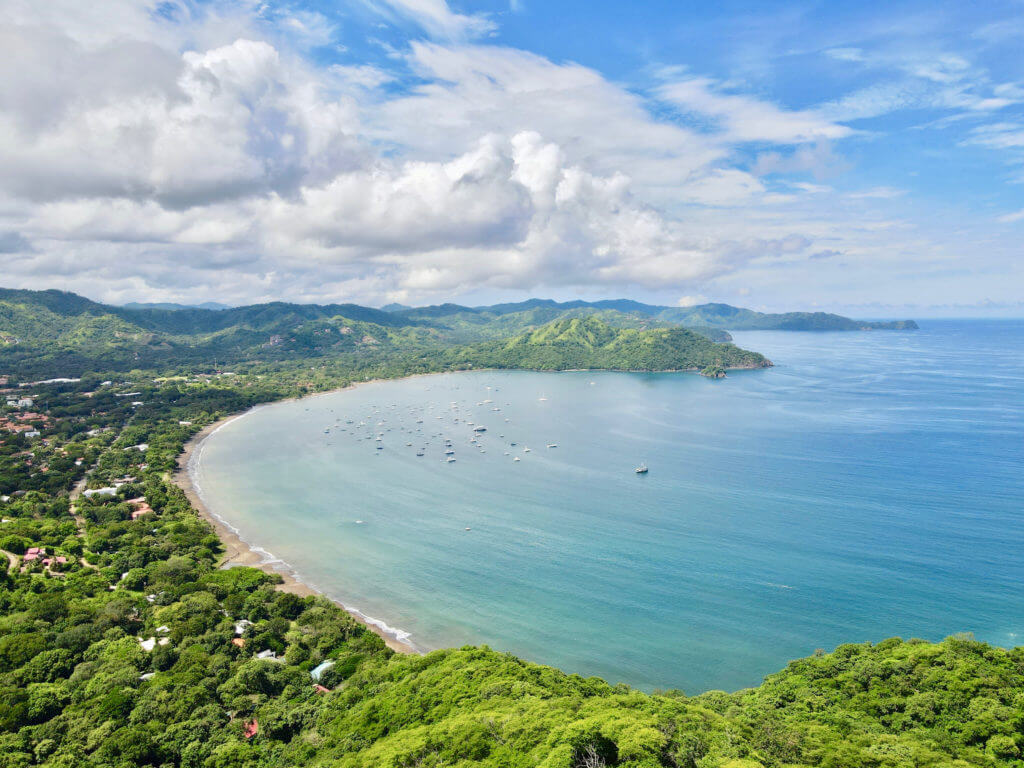
Playa del Coco is also an exceptionally beautiful area to observe above water.
Because the dive sites are within the bay and close to the shore, you get stunning views back towards the jungle covered mountains rising up from CR’s Nicoya Peninsular.
Several of the best dive sites here are situated around tiny islets which despite their small size are crowned with tiny yet dense patches of jungle on dramatic rock formations.
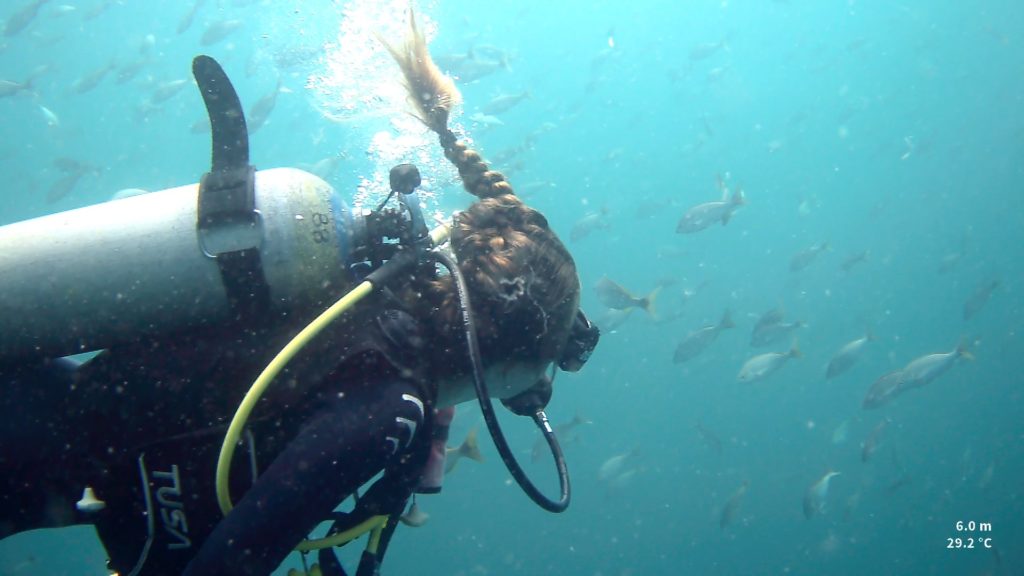
Playa Del Coco diving is done within Playa del Coco bay as well as within the next bay north, Hermosa bay.
There’s not any reef here – unlike the Isla del Cano diving further down Costa Rica’s Pacific coast, but the pelagic marine life is incredible and it’s an easy place to dive for beginners.
Picking a Dive Centre
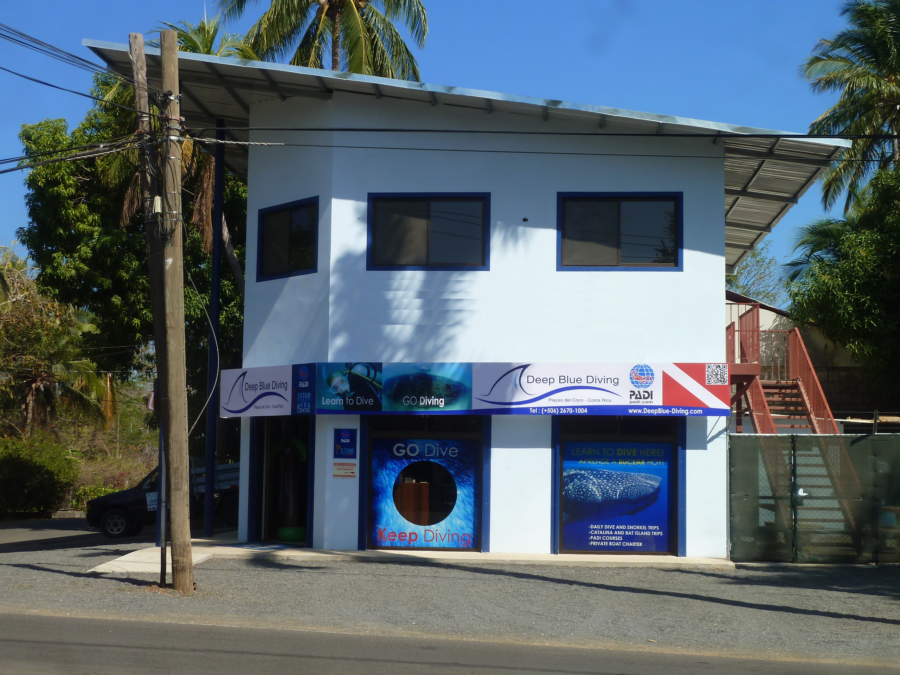
There’s several dive centres to choose from when diving Playa del Coco, most of which are found along the main tourist strip road. Prices and maximum group sizes are practically identical as are the various tours and packages on offer.
My favourite dive centre is actually just off the main tourist strip. To get there, head along the busy tourist road towards the beach. Pass Farmacia Aloe on your right and straight afterwards turn up the road to your right, heading North. After a 7 minute walk you’ll see a colourful mermaid statue on your left who guards the entrance to Deep Blue Diving.
So why do I love Deep Blue Diving so much that I go back to them every time I visit Playa del Coco? For starters their customer service is next level. For real, their staff are probably the most helpful and friendly bunch I’ve ever met.
They are constantly on hand to assist with anything and everything, without even being asked to. They take and prepare all of your gear for you, swapping tanks between dives, helping less experienced divers into their kit and washing off all your gear after each dive and hanging it up to dry in the dive centre.
When I went to make a movie of diving at Playa del Coco, the guys were excellent at pulling off all kinds of crazy manoeuvres like blowing bubble rings and pointing out cool things to capture on film. Professional and reliable they are, but they’re also a jolly friendly and hilarious group – don’t be surprised if you get invited to a game of soccer afterwards.
Another thing I really like about Deep Blue Diving is the fact that the staff are all Tico or Nicaraguan which means you are supporting Latin Americans unlike if you go to other dive centres in Playa del Coco whose staff are mostly from the USA and/or Europe. You can make a booking with them here.
Best Time to Dive
Playa del Coco scuba diving is possible all year round, with currents remaining practically non-existent and resident species such as whitetip reef sharks, turtles and rays being present every single month. That said:
- December – April: These months mark Costa Rica’s dry season and as such water visibility is at it’s best. These months also mark manta ray season at the Catalina Islands which you can visit on a half day trip from Playa del Coco. However, day trips to the Bat Islands are not possible during this period as water conditions are too rough.
- May – November: Rainy season in Costa Rica reduces water visibility somewhat. Diving around Playa del Coco still remains excellent with all the usual suspects in terms of marine life encountered here, but there are certainly some days where water visibility is considerably less. That said, it’s during these months that you can take day trips to the Bat Islands where it’s possible to see bull sharks.
Getting There
Situated in Costa Rica’s Gunacaste Province on the Nicoya Peninsular along the countries’ north pacific coast, Playa del Coco is perhaps the easiest and most straightforward to reach of all the countries diving destinations.
There are many public buses that take you straight into Playa del Coco. Alternately, if you want to drive there yourself, it’s entirely possible to do this even with a small car – no need for a 4X4 here as the roads around Guanacaste are some of the best in the country. Or you can fly into the nearest airport: Liberia from which it’s just an hour drive to get to Playa del Coco.
Other Stuff to Do
Playa del Coco is one of the most rapidly developing tourist hotspots of Costa Rica and as such there’s a variety of excellent restaurants, resorts and bars to choose from as well as a thriving expat scene.
That said, it’s still a small area and except for when you’re on the tiny tourist strip road, you’ll certainly feel fairly cut off from the rest of the world. There’s certainly some decent nightlife here, but again it’s not as wild nor are the locals hearts as thrown into it as at places like Jaco or San Jose.
For diver’s it’s always worth staying at Playa del Coco because this is where all of the dive centres are situated and where they depart from, but there’s other beaches you can explore nearby, such as the much quieter and more expensive Playa Hermosa.
If you’ve got some extra time to kill, my number one recommendation is to rent a car and drive around for a couple of days – the surrounding landscape is both beautiful and dramatic with rising hills and mountains covered in lush jungle for as far as the eye can see.
My favourite nearby viewpoint is Playa Carillo which is actually the name for the hillside associated with this beach, just a ten minute drive from Playa del Coco. It’s a great place to see the bays of both Playa del Coco and Hermosa whilst catching a beautiful sunset.
Playa del Coco is renowned as a healthy living kind of vibe place, which is another huge plus in my opinion. If that’s what you’re into check out this page for more info on Yoga and pure living in Costa Rica
Playa del Coco Diving Squad DEBRIEFING:
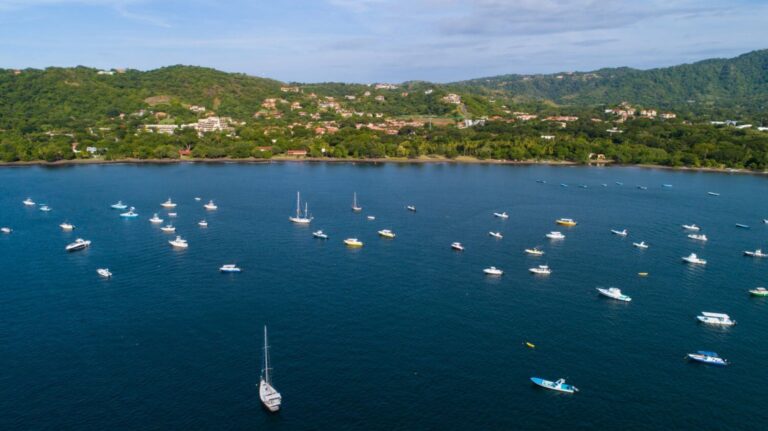
Diving Squad – at ease! We’ve fully covered what makes scuba diving Playa del Coco an awesome experience as well as the easiest and most straight forward to dive in Costa Rica. It’s one of the few areas in the country that offers excellent, beginner friendly diving all year round whilst also being easy to reach and comfortable to stay at.
Plus it serves as a jumping off point to the Catalina Islands and Bat Islands; meaning that once you’ve reached Playa del Coco you’re actually able to discover three different diving areas in CR.
If you’re planning to go diving around Costa Rica this is an excellent starting point; with more variety, accessibility and ease of diving than anywhere else in the country.
During my year long odyssey diving and driving lower Central America, Playa del Coco was my most frequently returned to destination!
